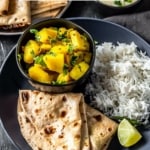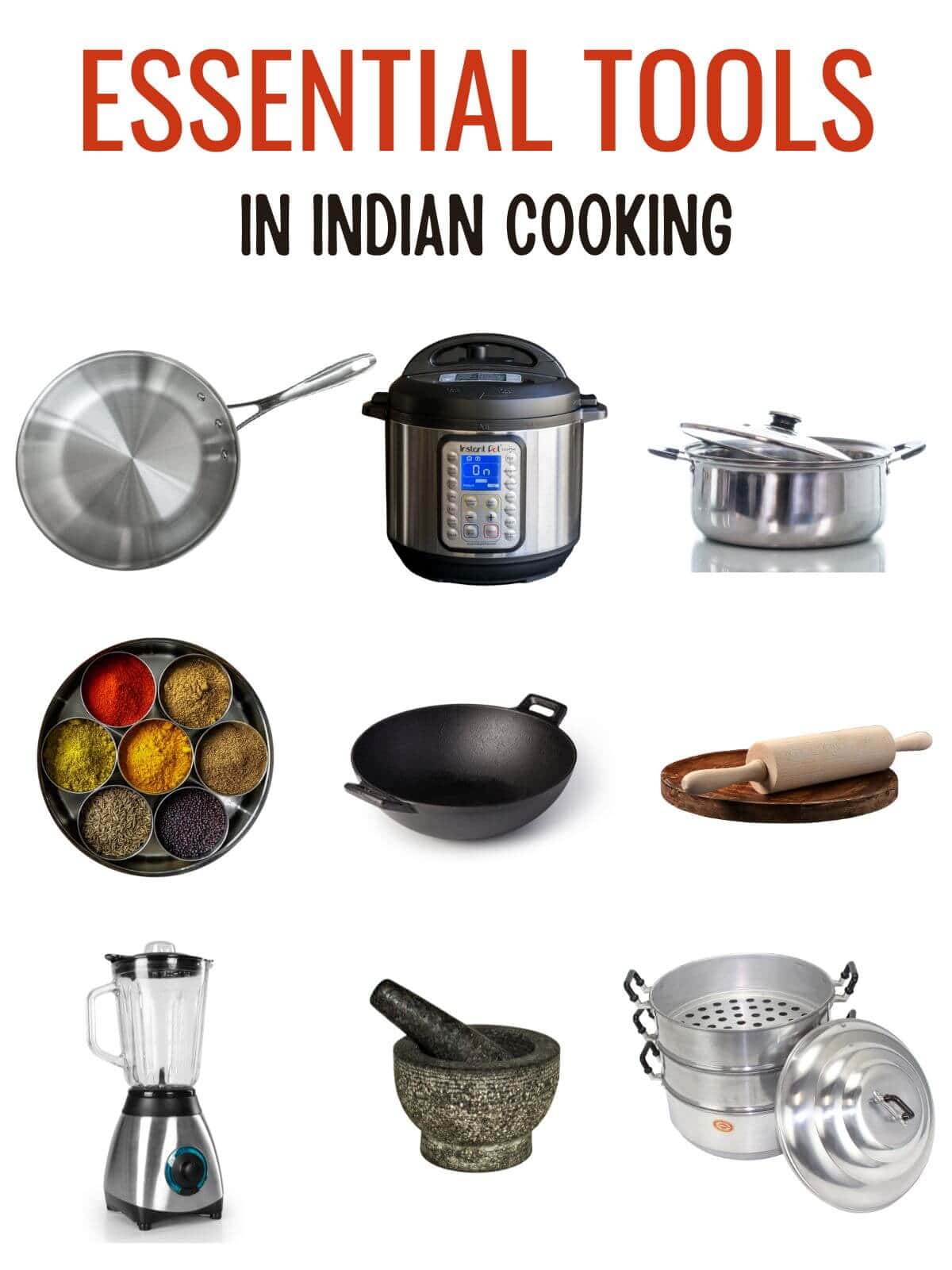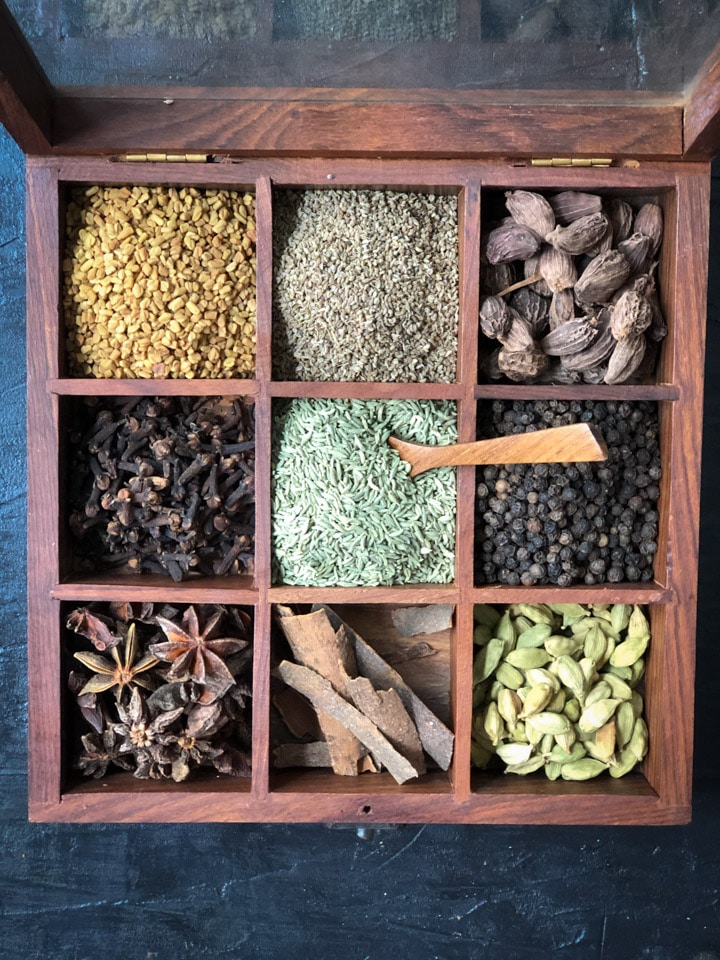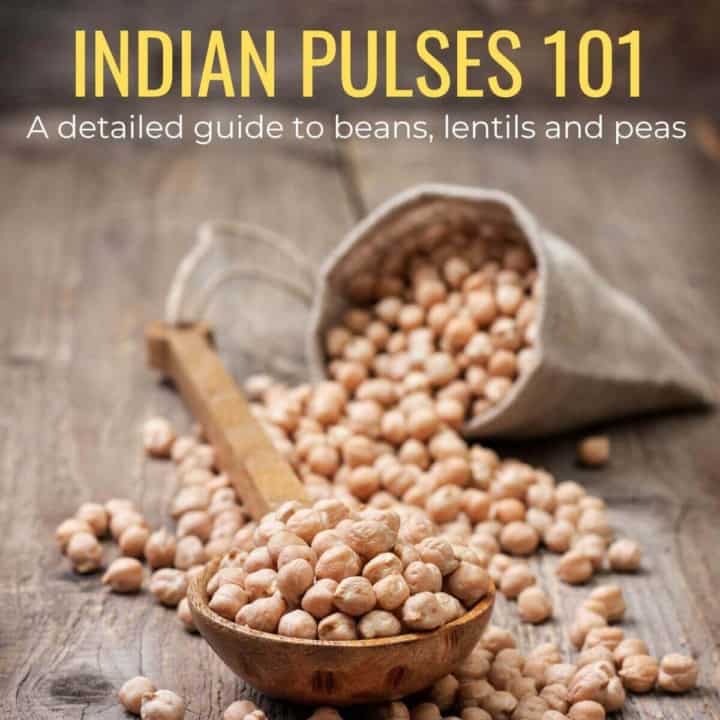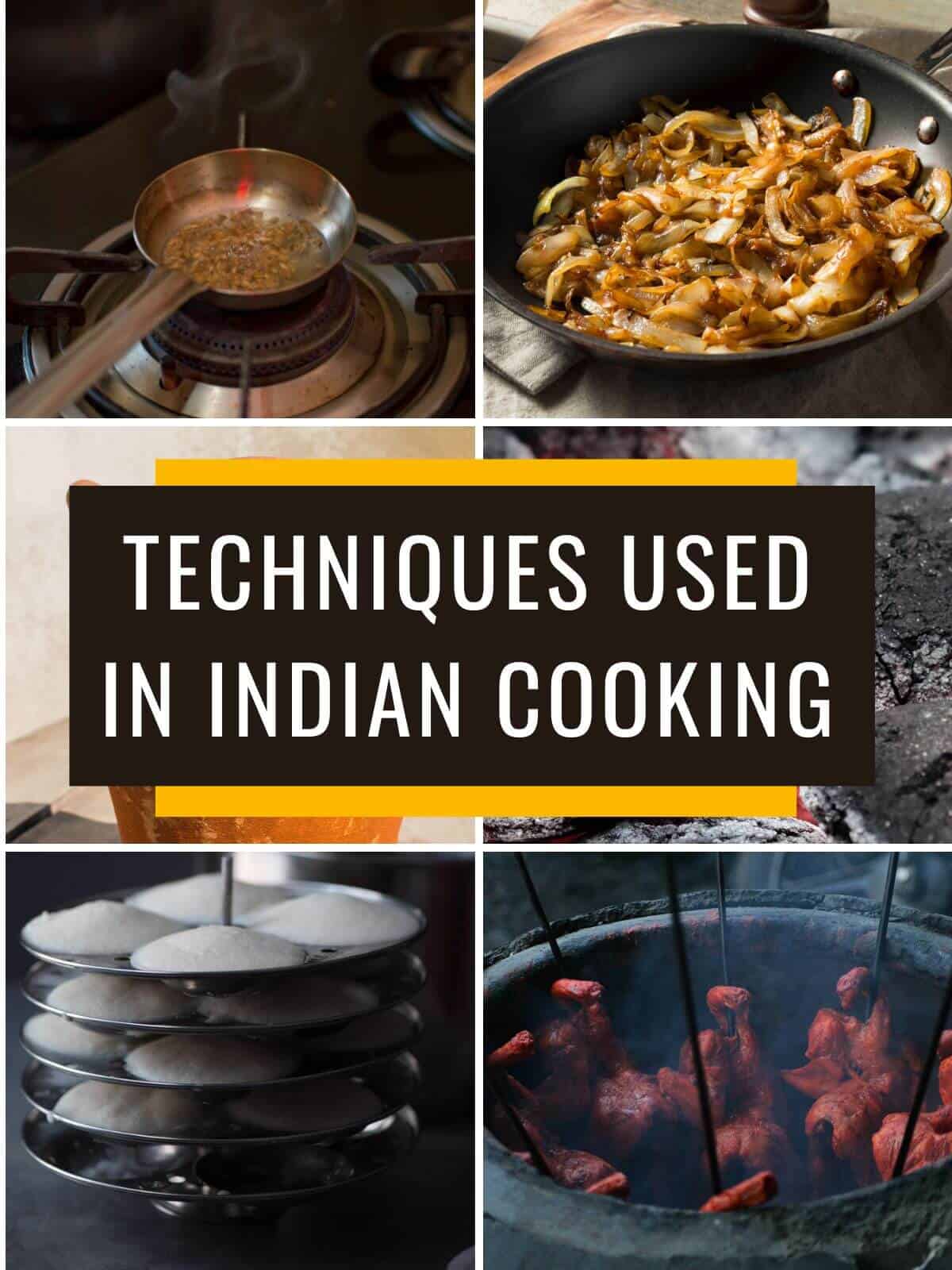A Complete Guide to Indian Cooking for Beginners
If Indian cuisine piques your interest and leaves you feeling a tad bit intimidated, you’ve landed in the perfect spot. Join us on this culinary journey as we demystify Indian cuisine, share insights, and equip you with the knowledge and skills to get you cooking in no time!
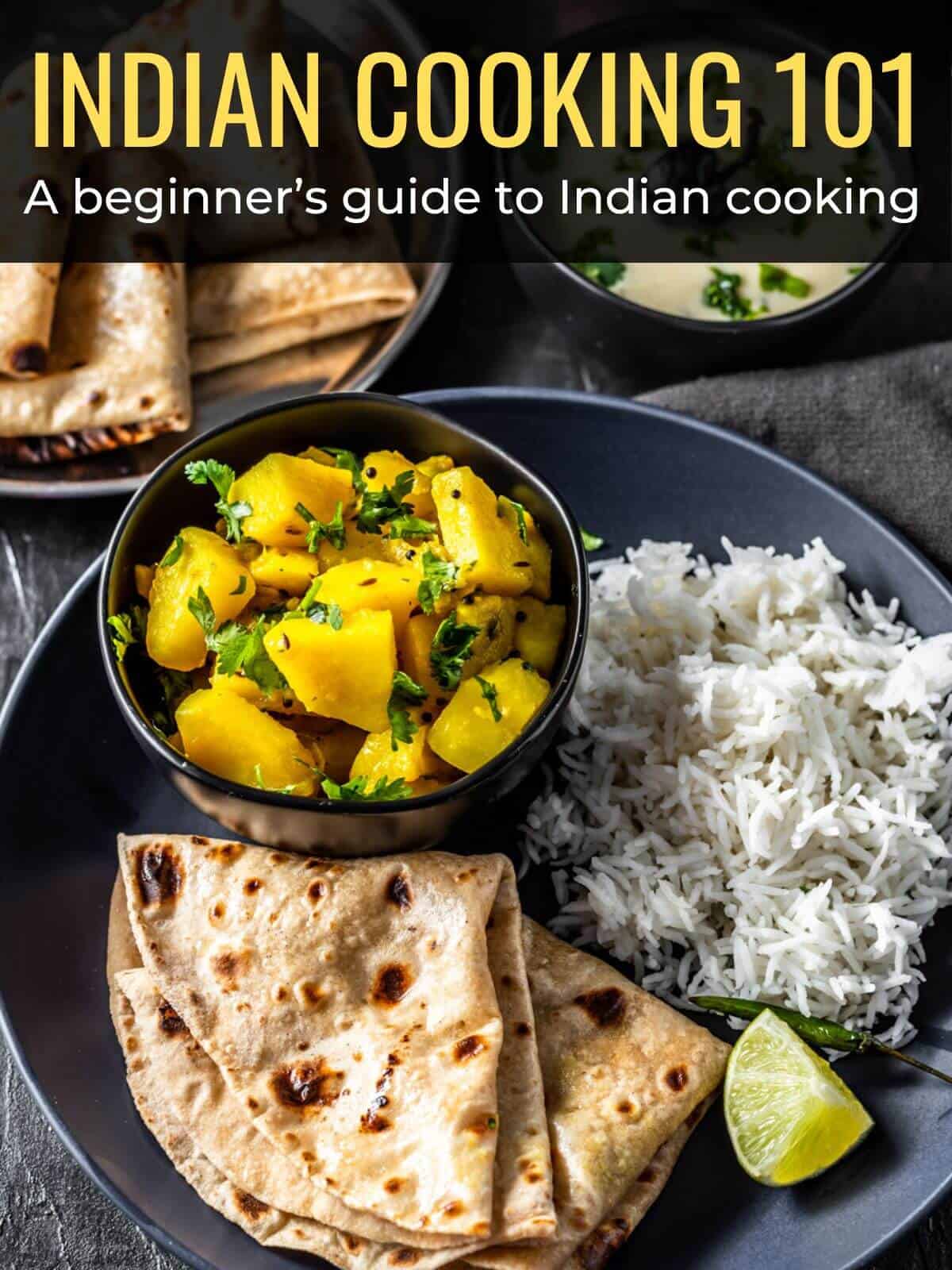
What is the first thing that comes to mind when you think of India?
Colorful clothes?
A billion-plus people?
An ancient civilization?
Yoga?
or is it Curry?
A country with forty languages and roughly 1600 dialects, India is as diverse as it can get, and its cuisine is equally reflective of this diversity. Contrary to popular belief, there is no single “Indian cuisine.”
What you see in most Indian restaurants today are simply a few dishes (from northern India primarily) that have become popular – naan (flatbread), paneer (cottage cheese), tandoori chicken, and butter chicken.
But that does as much justice to Indian cuisine as assuming Italian cuisine is all pasta with different sauces!
Even many Indians who’ve spent their entire lives in the country haven’t been exposed to the wide variety present – from light vegetarian fare with healthy steamed dishes to tangy fish curries, robust parathas, sumptuous chicken, and an endless list of sweets.
As Sanjeev Kapoor, one of India’s top chefs, aptly puts it in his book “How to Cook Indian” “Even if you taste a new dish every day, it will take a few lifetimes before you could exhaust the entire repertoire of Indian food.
Why is Indian food so diverse?
Traveling through India is a gastronome’s delight. Several factors have significantly influenced the diversity of Indian cuisine:
Invasion – India has been invaded over the millennia by many different foreign cultures. These invaders left their mark on Indian cuisine by introducing new cooking techniques and a medley of new herbs, spices, and vegetables. For instance, the Mughals brought dishes like korma, biryani, and tandoori cooking techniques, while the Portuguese introduced cashews, tomatoes, and chilies to Indian meals.
Religion – Religion plays a big part in what Indians eat or don’t eat. Muslims consider pork sacrilegious but consume beef, while many Hindus who eat meat avoid beef due to the sacred status of cows. The Jain community follows a strict vegetarian diet that excludes root vegetables like potatoes, onions, and garlic.
Location – India can be broadly divided into four regions—North, South, East, and West—each with its distinctive cuisine. Variations arise from locally available ingredients, cooking styles, and preferred cereals or lentils. For example, North India is known for whole wheat rotis, paneer, lassi, and ghee, while South India relies heavily on rice, coconut oil, and tamarind. East is all about making delicious fish dishes in mustard oil and mouthwatering milk-based desserts. In contrast, Western India can get really diverse, with Goans loving their fish and most of Gujarat being mostly vegetarian.
Cooking style – Take all the factors stated above and add cooking style to the mix – with every household adding its own twist to the same dish, the possibilities are endless.
That’s why Indian cuisine is elaborate and complex, with spices that unleash a riot of flavors. Don’t be daunted, though! There are enough and more simple dishes that are healthy, quick, and can tease your palette with enchanting flavors.
And no, they aren’t all spicy:).
What exactly is a curry?
While there are dozens of different dishes found in Indian cuisine, the one that has become synonymous with Indian cuisine has to be the “curry.” The word “curry” itself is an anglicized version of the Tamil word “Kari,” which means a sauce or a relish that can be combined with rice.
The flavorful gravy that the rest of the world now thinks of as curry can be a combination of so many different ingredients and cannot be generalized by one name. For the average Indian, each of these gravy-based dishes has individual names such as paneer pasanda, mutton korma, dum aloo, etc.
However, it’s worth noting that on most Indian restaurant menus worldwide and in online publications like blogs, the term “curry” is often added to the Indian names of these dishes to make them more relatable to the global audience.
For those eager to delve deeper into the world of Indian curries and explore the many flavors they offer, we recommend reading our article on different types of Indian curries. This comprehensive guide not only sheds light on the diverse curry styles but also serves as a valuable resource when navigating Indian restaurant menus.
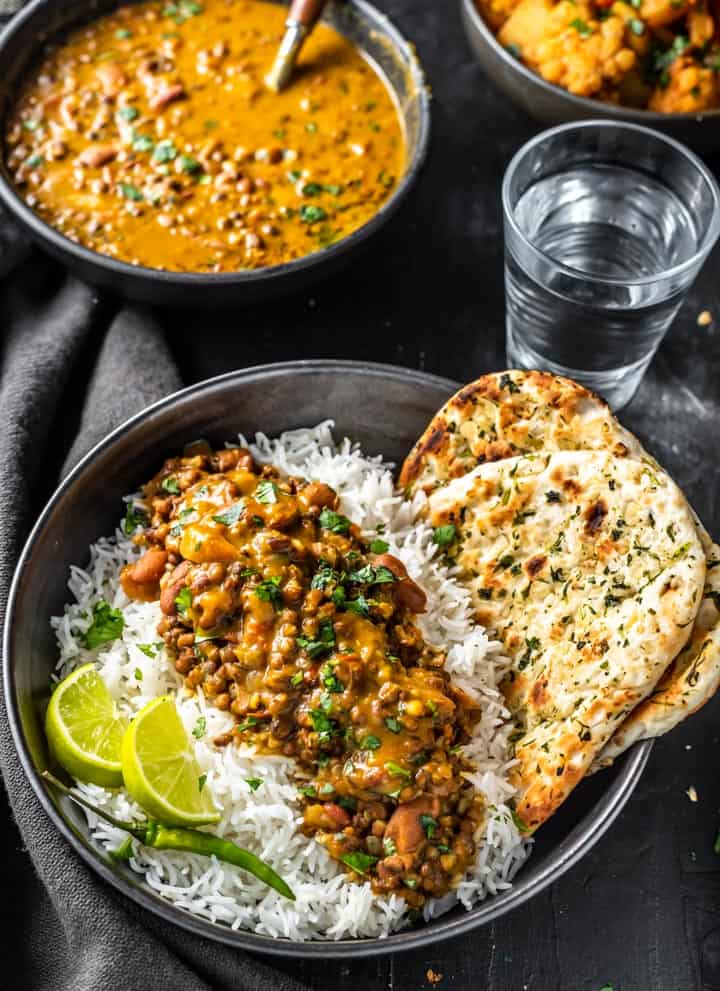
What is curry powder?
Curry powder—a term that has often been associated with Indian cuisine. However, it’s essential to clarify that when it comes to authentic Indian cooking, the concept of curry powder doesn’t exist. This intriguing spice blend was actually a creation of the British, formulated in their attempt to replicate the flavors they had encountered in India.
The notion of curry powder doesn’t align with the philosophy of Indian culinary tradition. In India, we don’t employ the same spice mix used in a dish like dum aloo to create, for instance, a chicken makhani. Each Indian dish boasts its unique blend of whole spices and powdered spices, meticulously chosen to create a distinct and unforgettable flavor.
The only thing that comes close to curry powder is garam masala powder – a spice powder popularly used in North Indian cooking. If you are into making spice blends at home, here’s a link to the few I make at home – Homemade spice blends.
What does an Indian meal consist of?
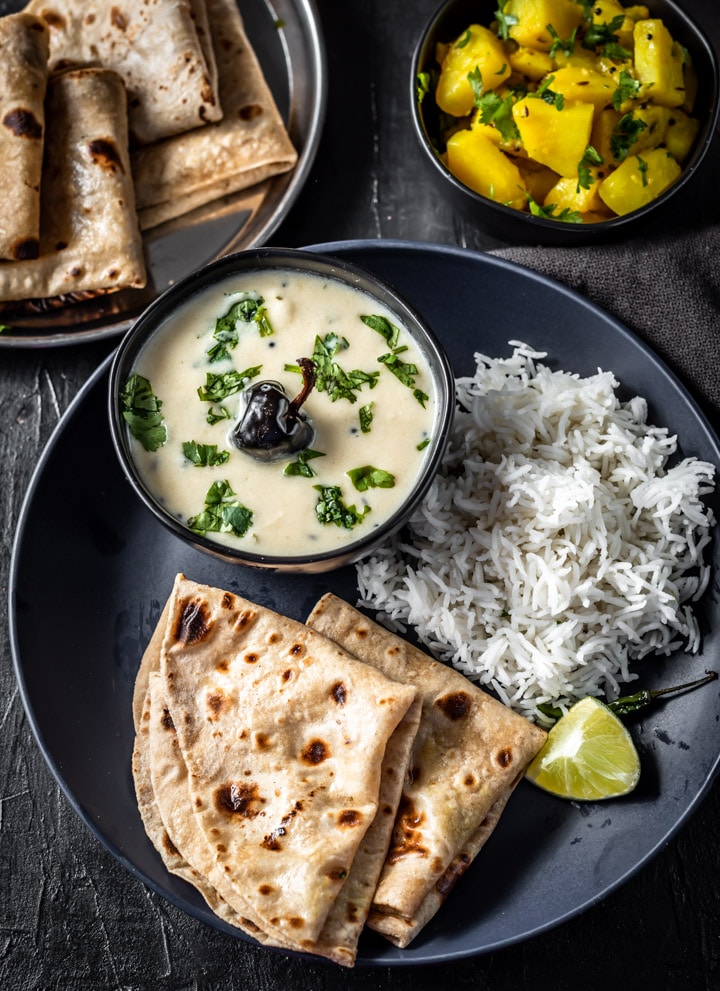
You just learned how Indian food can vary so much from one household to another, making each meal a unique experience. While there is flexibility in meal preparation, there are some general guidelines most folks follow when serving a complete Indian meal –
1. Bread and/or Rice: The heart of an Indian meal often centers around unleavened flatbreads such as rotis and/or rice. These serve as the base upon which the rest of the meal is built.
2. Curries: Curries take center stage and come in various forms. They can be lentil-based dishes like dal, pulses like chana masala, or meat curries, depending on dietary preferences. These flavorful gravies are an integral part of the meal. Check out 30+ authentic and popular Indian curries.
3. Dry Side Dish: Accompanying the gravies is a dry side dish, which can be a vegetable stir-fry (sabzi), paneer preparation, or another variation based on seasonal ingredients and regional influences. Read more: 35+ Popular Indian side dishes to go with your meal.
4. Condiments: Indian meals often feature an array of condiments to add depth to the flavors. Raita, a yogurt-based side dish with various ingredients like cucumber or mint, complements the meal. Chutneys and pickles, ranging from sweet to spicy, offer a burst of flavor.
5. Beverages: Occasionally, a yogurt-based drink like lassi or buttermilk will also be served.
6. Desserts: On festive occasions or to round off a special meal, Indian desserts (mithai) are also served. These can range from sweet treats like gulab jamun or jalebi to rice-based sweets like kheer. Check out – 45+ easy Indian sweets worth trying!
The beauty of Indian cuisine lies in its diversity, regional variations, and the endless array of dishes that can be explored. Whether you’re a seasoned cook or embarking on your first Indian culinary adventure, stocking up your pantry with essential spices and ingredients is a great starting point. So, are you ready to dive into the flavors of India and create your own Indian culinary masterpiece?
How to set up an Indian pantry
If you’re excited about cooking Indian food, there are four key things you need to know to set up your kitchen: tools, spices, pulses, and oils. Check out my comprehensive guides below on these topics to get started.
Kitchen tools used in Indian cooking
When preparing authentic Indian dishes in your kitchen, you’ll find that you don’t need an extensive array of tools. In fact, you might already have many of these essentials on hand, especially if you’ve been cooking regularly. Here’s a concise list of kitchen tools that will serve you well.
Kitchen tools for Indian cooking
A well-equipped kitchen is the first step to successful Indian cooking. Click on the link below to get started.
Spices used in Indian cooking
Spices are the heart and soul of Indian cooking. While there are numerous spices to explore, here are seven essentials to kickstart your Indian spice collection:
- Cumin seeds (jeera)
- Mustard seeds (rai)
- Cumin Powder (jeera powder)
- Coriander powder (dhania powder)
- Chili powder
- Turmeric powder
- Garam masala powder
To deepen your understanding of these spices and their culinary applications, click on the post below.
Essential spices in Indian cooking
You don’t need a long list of spices to make Indian food; these seven essential spices are all you need to get started. This post will show you which spices to buy and how to use these spices to make delicious Indian food.
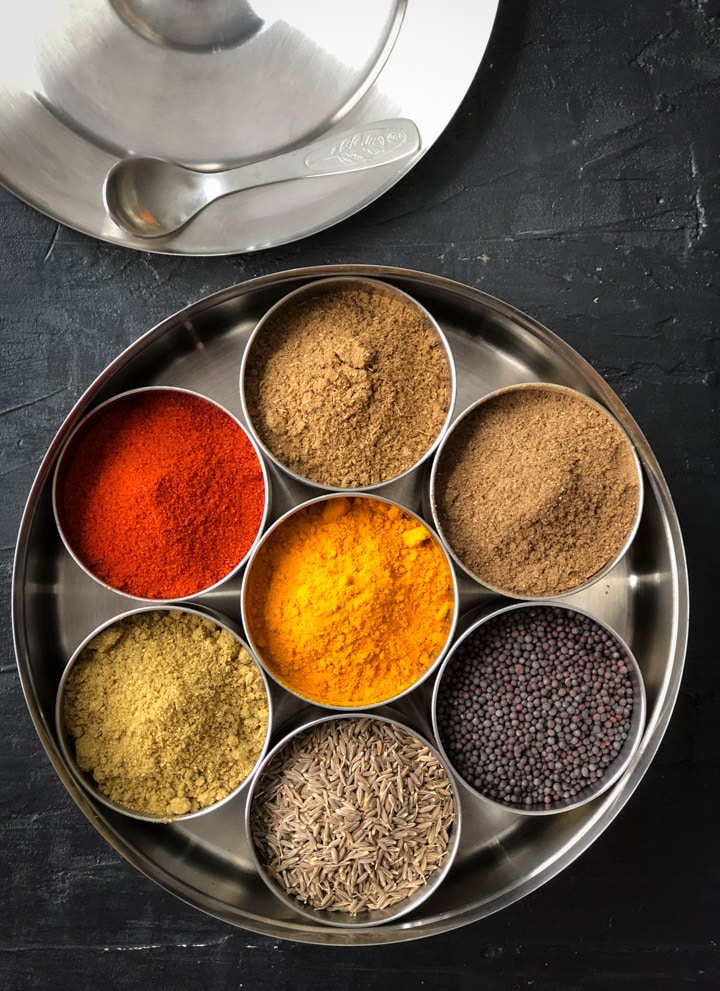
Pulses used in Indian cooking
For Indians, especially vegetarians, it is hard to imagine a meal without at least one dish made from pulses. Pulses are an integral part of Indian cuisine in curries, dumplings, snacks, and even sweets. That is why knowing the different pulses is an essential step in learning to cook Indian food.
To kickstart your knowledge, check out the post below – it’ll teach you to identify and differentiate between beans, lentils, and peas, and you’ll learn how to cook them (recipes included!).
Pulses got you confused? This ultimate guide to Indian pulses is here to help you figure out the differences between beans, lentils, and peas and show you some easy ways to use them in Indian cooking. Let’s get started!
Oils used in Indian cooking
The choice of cooking oil is crucial in Indian cuisine, as it can significantly influence the taste of your dishes. With the variety of oils available in grocery stores, it is often overwhelming to pick the one that would be right in terms of nutrition value, taste, and smoke point. This post below on the best oils for Indian cooking is worth a read. It is a short but informative article that will help you choose the right oil for your culinary endeavors.
Considering the variety of oils available in the market, it can get daunting to pick the one that works for Indian cooking. Our post aims to clear the confusion and guide you toward selecting the ideal oil for your Indian culinary adventures.
Techniques used in Indian cooking
As in sports, so in cooking, an initiation into the techniques is always helpful before you go on to practice your art. Indian cooking combines many different cooking techniques to create one drool-worthy dish. Click the post below to learn more!
Techniques used in Indian cooking
Indian cooking employs a wide range of techniques to create its distinctive flavors. To familiarize yourself with these fundamental methods, click on the post below –
Recommended reading: Deep dive into tempering in Indian cooking – the most used technique in Indian cuisine.
Easy Indian food recipes to get started with
Now that we’ve discussed kitchen tools, techniques, and pantry essentials for Indian cooking, it’s time to explore some quick and easy recipes to kickstart your experience.
Jeera rice
The mere aroma of this fragrant, fluffy Basmati rice infused with cumin seeds is bound to tantalize your taste buds. Discover how to whip up this flavorful rice dish in ten minutes or less.
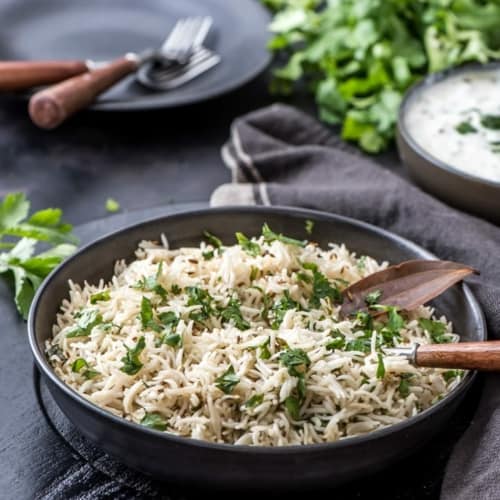
Tadka dal
Enjoy easy one-pot cooking with this tadka dal recipe – Whether you have an Instant Pot or a regular pressure cooker, this dish will be ready quickly!
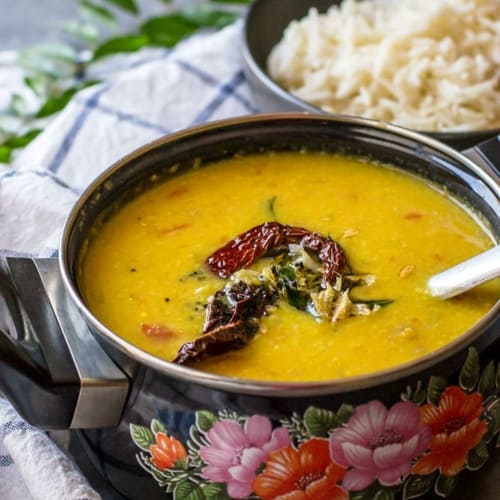
Aloo bhaji
Learn to make this classic Indian potato recipe in under 30 minutes using a pressure cooker like Instant Pot. This versatile dish is easy to make, and it is perfect for those who are new to Indian cooking.
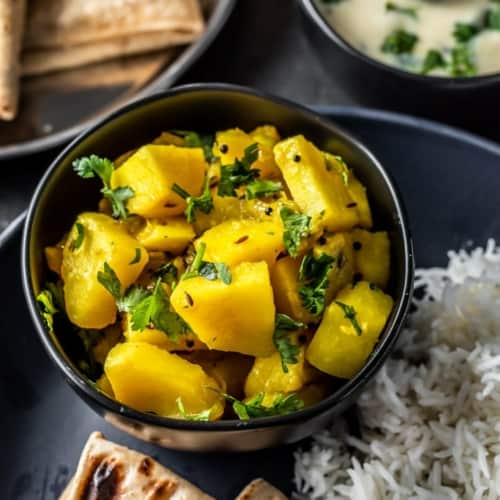
Onion raita
If you’ve had Indian food, you’ve likely tried this popular raita, often served with biryanis, kebabs, and butter chicken. It’s a simple, budget-friendly dish made with basic pantry ingredients you already have.
Rice kheer
Making rice kheer just got a whole lot quicker with this easy Instant Pot kheer recipe. This Indian rice pudding comes out creamy and flavorful without spending hours in the kitchen.
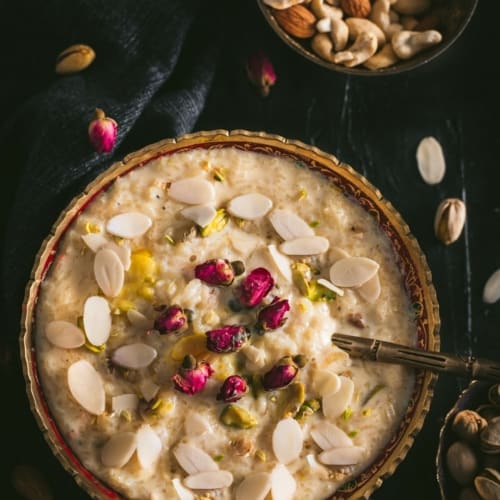
More Indian recipes for you to explore
Check out some of my popular recipe collections:
- 35+ Best Indian breakfast recipes worth trying
- 10+ Fingerlicking Indian chutney recipes
- 30+ Authentic Indian flatbread recipes
- 25+ Best rice recipes that are perfect for everyday meals
- 30+ Easy Instant Pot Indian curry recipes
- 35+ Popular Indian side dishes to go with your meal
- 45+ Easy Indian sweets and desserts that are a must-try
This post was originally published on 11/27/2019, and the text and images were updated on Oct 31, 2023.

